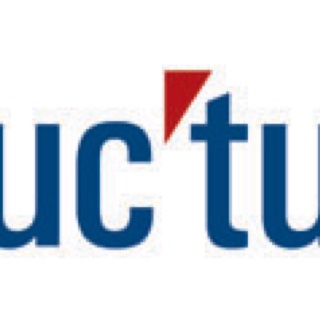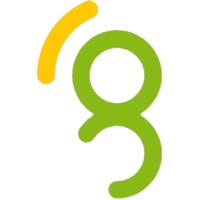Information
-
Audit Title
-
Document No.
-
Client / Site
-
Conducted on
-
Prepared by
-
Location
-
Personnel
-
-
Check off all items that have been completed (X=Completed)
Job Site Visit Checklist
-
Participate in the JSA prior to the start of work
-
Lead/Participate in the stretch and flex session
-
Participate in site safety team meeting
-
Review meeting notes or minutes of previous site safety team meeting
-
Review the site observation reports that were submitted for last week
-
Review previous Manager's safety audits to ensure follow up
-
Conduct/participate in safety audits / assessment with the foreman and technicians
-
Write a site observation report (recognize good behavior- 4:1 feedback, Quality moments and safety concerns) and must submit before leaving the job site. (1 safety observation report is required each site visit!)
-
Identify a product from the job site and verify that the appropriate SDS is available onsite. This process will create accountability for all products on site
-
Review the site safety plan (EH&S), Emergency evacuation plan, and Injury management plan and poster. While conducting your site audit, ask field employees how they would handle an emergency and where the first aid supplies are located
-
Discuss and reinforce the importance of leadership and accountability with all management and employees on site.
-
Job Notes:
Job Site Information
-
Branch:
-
Number of Emp:
-
Project Manager:
-
PE:
-
Superintendent:
-
Foremen 1:
-
Foremen 2:
1. PERSONAL SAFETY EQUIPMENT & REQUIRED CLOTHING
-
a. Eye protection: Z-87.1 and rated for Task
-
b. Hearing protection: Noise levels > 85 Dbs
-
c. Work boots: Leather/die electric/steel toe/metatarsal/other
-
d. Long pants
-
e. Sleeved shirts
-
f. Hard hats at all times on job sites
-
g. Reflective vests (traffic control)
-
h. Floatation devices when on, over or near water
-
i. Chemical Protection: tyvec suits/rain suites/1/2 sleeves
-
j. Hand protection: welding/leather/cut proof/chemical/other
2. HOUSEKEEPING
-
a. Are rebar caps used to eliminate impalement potential?
-
b. Debris being cleaned up
-
c. Point loading of debris on elevated decks
-
d. Proper storage of materials, supplies, equipment
-
e. Trip hazards (ice, oil, electric chords, airlines, etc.)
-
f. Proper means of disposal (Dumpsters, trash cans with lids)
-
g. Combustible debris cleaned up and not creating fire hazard
-
h. Nails pulled from scrap wood
-
I. Pedestrian walkways free of trip and slip hazards
3. Structure Safety and Protection
-
a. Loose and delaminated concrete removed prior to working
-
b. Has engineered shoring plan been developed for this work?
-
c. Has shoring plan been properly implemented, maintained?
-
d. Is shoring left in place until completion of proper cure time (75% of design strength)?
-
e. Is shoring around columns when concrete removed?
-
f. Is structure capable of supporting construction equipment?
-
g. Is structure capable of supporting construction debris?
-
h. Is there point loading of stored materials?
-
I. Has imbedded elec.conduits/other elec.systems been located
4. RESPIRATORY/HAZARDOUS COMMUNICATION
Respirators Procedures
-
a. Competent person assessing effectiveness of Resp. Prog.
-
b. Right respirator for the specific hazard
-
c. Respirators Stored/cleaned/disinfected properly
-
d. Respirator users trained, given physicals, and fit tested
-
E. Respirators used properly
Hazard Communication Procedures
-
b. Chemical lists posted
-
c. Employees trained on hazcom & specific chemicals in use
-
d. Proper identification labels on cans
-
e. MSDS on site and available for employees
5. FALL PROTECTION OK Action Comments
-
a. Do employees have the proper Fall Protection Training
-
b. Are Daily/weekly/monthly fall equipment inspections done
-
c. Vertical & horizontal life lines properly rated and inspected
-
d. Are there any unprotected floors & walkways (6ft or higher)
-
e. Are Floor openings covered, clearly marked or guarded.
-
f. Are handrails properly constructed top/middle/toe board
-
g. Is fall arrest equipment Logged in and dated
-
h. Are employees tied off at all times when exposed to falls
-
I. Motion Stopping System Meets OSHA requirements
-
J. Tie off points 5000 lbs/man
6. EQUIPMENT: SAFE USE, INSPECTION & MAINTENANCE OK Action Comments
Access Procedures
a
-
1) Swing stage properly constructed & Inspected
-
2) Roof setup for Swings properly constructed & Inspected
-
3) Swing Stage: Employees trained/competent/proper use
-
4) Men, tools & equipment weight within scaffold rating.
b
-
1) Frame scaffold properly constructed & Inspected
-
2) Overloaded frame scaffolds/platforms/work decks/etc.
-
3) Frame scaffold:Employees trained/competent/proper use
-
4) Landing areas/platforms free of debris/trip hazards
-
5) Employees not over reaching limits of scaffolds.
c
-
1) Ladder at proper angle/tied off @ top/3 Ft.above Landing
-
2)Non conductive ladders used if working around Electricity
-
3)Ladders with broken/missing/cracked/damaged
-
4)Ladders: Employees trained/competent/proper use
d
-
1) Stair rails provided for stairs with 4 or more risers
-
2) Stairs free of debris, sand, oil/ice, elect.cords, airlines
-
4) Stairs not used for storage of materials
e
-
1) Aerial man lifts: Employee trained/competent/proper use
-
2)Stable, level drive area
-
3)Employees tied off at all times to basket
-
4)Equipment not used as a crane to lift materials
-
5)Cords/cables/ropes/airlines not hanging form the basket
-
6)Men & equipment load within manufacturer's specification
f
-
1) Scissors lifts: Employees trained/competent/proper use
-
2)Stable, level drive area
-
3)Employees tied off, if possible, to platform.
-
4)Equipment not used as a crane to lift materials
-
5)Cords/cables/ropes/airlines not hanging form the basket
-
6)Men & equipment load within manufacturer's specification
g
-
Stairs or ladder provided when breaks in elevation is > 19"
h
-
1)Elevated platforms: Landing/form traveler/Knee bracket
-
2) Equipment weight within rated load capacity
-
3) Hand rails complete
i
-
1) Bracket scaffold: Adequate access/hand rails/Rigging/use
-
2) Following proper jumping procedure
Equipment Procedures
-
a.Skid steers: Employees trained/competent/proper use
-
b.Concrete Buggies: Employee trained/competent/proper use
-
c.Forklifts: Emp. trained/competent/properly use/maintained
-
f.Water blasters: Employees trained/competent/proper use
-
g.Sand pots: Employees trained/competent/proper use
-
h.Hand tools (Chipping, guns, drills, scarifier, etc.)
-
i.Grout pumps (Epoxy, Chemical, Concrete, cleaning)
-
j.Airlines & receiver tanks is safe working condition
-
k.Air compressors properly maintained and used
-
l.0ther equipment: Employees trained/competent/proper use
Company Vehicle Procedures
-
a.Vehicle inspection checklist done daily/defects corrected
-
b.Towing equipment properly connected (safety chains)
-
c.Tow hitches and ball hitch connections maintained
-
d.Load is stable/secured properly, does not overload vehicle
-
e.Mechanized equipment driven safely
-
f.Proper protection and warning signs in public/traffic areas
-
g.Required safety equipment on vehicle
-
h.Scheduled maintenance up to date
Other Tools and Equipment Procedures
-
a.Grinders used with guards and handles
-
b.Saws with proper guards and not modified/2 hands on saw
-
c.Running equipment not left unattended
-
d.Keys removed from equipment when not attended
-
e.Equipment cleaned & free of debris
-
f.Proper use of tuggers or pushers
-
g.1) Roof cranes/Hoists inspected and used properly
-
2)Load rating marked on basket
-
3)Properly inspected (daily, weekly, monthly, annual)
-
4)0perator at controls while load is suspended
-
5)Three full wraps on winding drum
7. JOB SITE SAFETY
Job site Requirements
-
a.0SHA, minimum wage, discrimination, etc...
-
b.Employee required training
-
c.Managers First Aid & Adult CPR training
-
d.First aid kits/Eye wash/Burn Stations
-
e.Bloodborne pathogens kits available
-
f.Worker's Compensation Incident reporting procedures
Electrical Safety
-
a.Assured grounding inspection and taping done correctly
-
b.Adequate lighting for work areas
-
c.Electric cords and panels properly constructed & Inspected
-
d.Correct wiring for string lights
-
e.Electric pannel boxes have proper covers
-
f.GFCI used if exposured to weather or wet/damp conditions
-
g.Elec. tools unplugged if repairing or changing bits/blade/etc.
Sanitation
-
a.Drinking water with disposable cups and trash receptacle
-
b.Water containers cleaned and sanitized daily
-
c.Proper trash disposal at drinking/eating/work areas
-
d.Proper number of toilets and wash-up facility provided
Compressed Air & Gas Cylinder Safety
-
a.Airlines tie wired or secured at couplings
-
b.Compressed air receiver tanks equipped with blow off valve
-
c.Compressed air is not used to blow dust from clothing
-
d.Compressed cylinders stored and secured vertically
-
e.Caps on cylinders when not in use
-
f.1) O 2 and fuel gases stored 20' apart or
-
g.Flash back arresters on torch handle & at cylinder
-
h.Compressed gas cylinders handled and moved safely
Fuel Handling and Flammable liquids
-
a.OSHA regulations gas cans with flash arrester
-
b.Equipment turned off while fueling
-
c.Fuel storage area: Signs/Containment/> 20lbs Extinguisher
-
d.Proper storage of flammable liquid construction products
Fire Protection
-
a.Adequate fire extinguishers: Inspection/placement/size
-
b.Welding, burning, cutting: No combustibles in area
-
c.Fire watch provided when necessary
-
d.Oily rags stored in proper container
-
e.Designated smoking area provided and marked
-
f.No smoking signs posted
-
g.Fire extinguishers being maintained
-
h.Employees trained in proper use of fire extinguishers
Ventilation
-
a.Confined space requires 20 air changes per hour
-
b.Provides clean, breathable air (Constant Monitoring)
-
c.Air flow sufficient to reduce contaminants to a safe level
Other Procedures
-
a. Following demolition procedure: PPE/Shoring/Compressed air
-
b. Following concrete placement procedure: Forms/Shoring
-
c. 1) Following confined space procedures
-
2)Employees trained in Confined Space procedures
-
3)Qualified person assessing CS effective procedures
-
d. Following lock-out, tag-out procedures
-
e. Following working on over or near water procedures
-
f. 1) Following trenching procedures
-
2)Employees competent in trenching procedures
-
3)Qualified person assessing effective trench Procedures
-
4)Shoring, Benching, Sloping engineered
-
5)Proper entry and exits provided
-
g. Lifting:1)Plan 2)Bend knees 3)Keep close 4)Pivot don't twist
8. GENERAL SAFETY
-
a.Overhead protection from falling/flying debris/tools/equip.
-
b.Public warning/hazard signs, signals or communication
-
c.Fall potential: open holes covered, fencing, hand rails,
-
d.Traffic control: signs, direction, barrels, barricades
-
e.Dust/Vapor:Dust curtains,tape doors/windows,ventilate area
-
f.Noise control: Monitoring/noise barriers/distance
-
g.Water hazards: life rings/hand rails/signage
-
h.Public protected from flying/spilled construction chemicals
-
I. Pedestrian walkways protected from trip & slip hazards:
-
j.Adequate pedestrian barriers/fenses/gates/flagging
-
k.Owner's Glass/tile/flooring/vehicles/property protected
9. SAFETY CULTURE
-
a.Project mgrs dedicate time to safety mtgs/action items
-
b.JSA's are done daily & when new processes or task start
-
c.Pre Project Planning (PrePP) done for changed conditions
-
d.Pre Task Planning (PreTP) done prior to starting new tasks
-
e.Site specific safety training from PrePP Implemented
-
f.Follow-up on action items from JSA's, MSA's, PrePP, PreTP
-
g.Site Specific Safety Plan from PrePP implemented
-
h.New emp. given Standard Orientation prior to starting work
10. LIST COMPETENT PERSONS FOR:
-
a.Respirator Protection:
-
b.Confined Space:
-
c.Scaffolds, platforms and Ladders:
-
d.Personal Protection Equipment:
-
e.Fall Protection:
-
f.Welding:
-
g.Cranes/Hoists & Rigging:
-
h.Grouting:
-
I.Forming:
-
J.Trenching:
-
k.Motorized access equipment:
-
l.Other specialty equipment (1):
-
m.Other specialty equipment ( 2):
11. Other Topics/Issues
-
On site representative's signature
-
Auditor's signature















